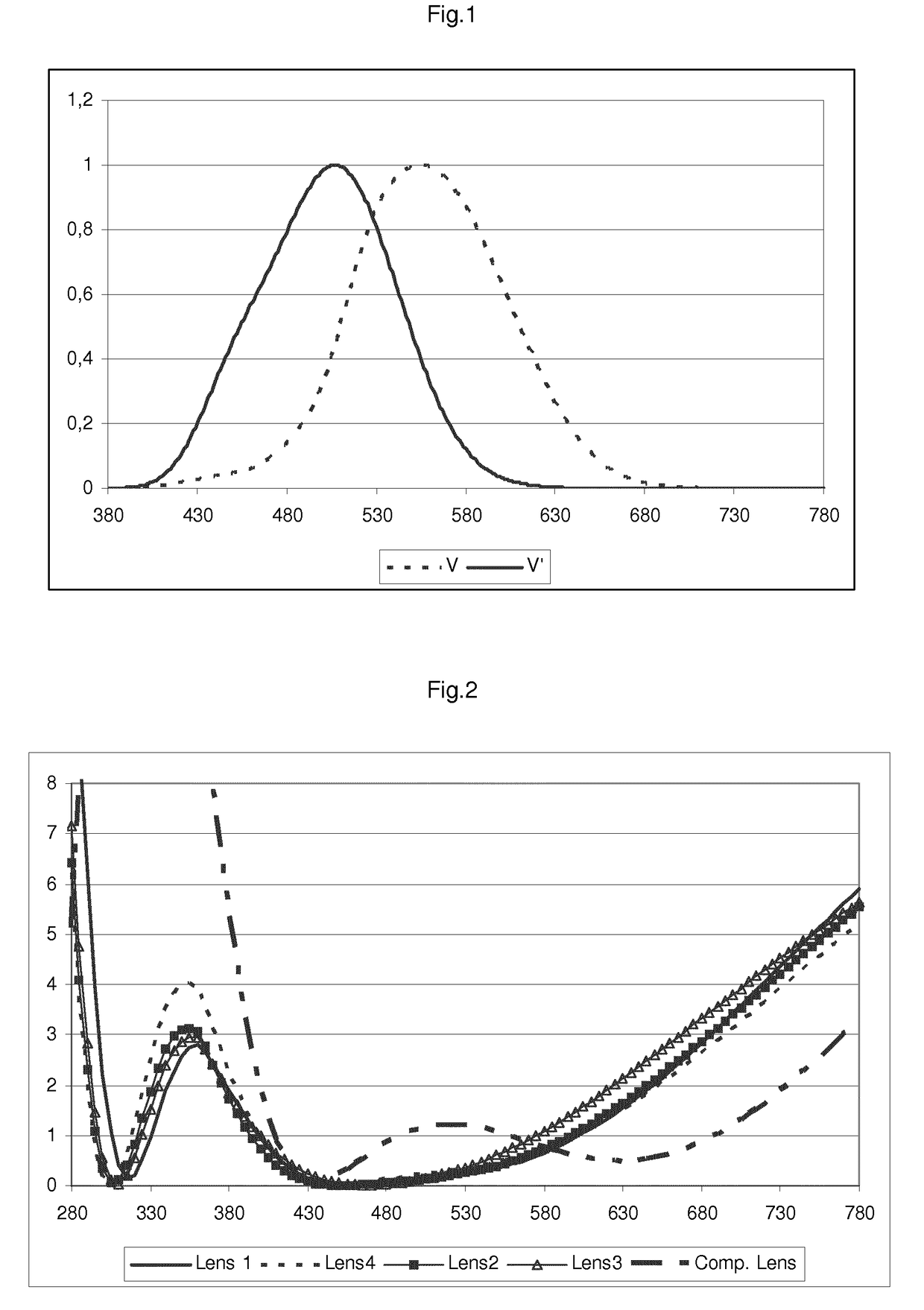Optical Article Comprising an Antireflective Coating in the Visible Region for Low Luminance Conditions
a technology of anti-reflective coating and optical article, which is applied in the field of optical article, can solve the problems of limited reflection, scotopic vision accuracy, ghosts, etc., and achieve the effect of reducing reflectivity
- Summary
- Abstract
- Description
- Claims
- Application Information
AI Technical Summary
Benefits of technology
Problems solved by technology
Method used
Image
Examples
examples
[0119]1. General Procedures
[0120]Optical articles according to the invention were designed with the target of achieving the minimum Rv′, produced, and tested.
[0121]The optical articles used in the example according to the invention comprise a lens substrate having a 65 mm diameter, a refractive index of 1.50 (made of CR39®), 1.60 (made of MR8®) or 1.67 (made of MR7®), and a power of −2.00 diopters, coated with a hard coat layer whose refractive index is matched with the underlying substrate and coated on its front face with the anti reflection coating of the invention (see TABLE 1). For lenses 1 to 3, the HI sheet which is the closest form the substrate is a bilayer made of a first layer L1 of SiO and a second layer of TiO2. For lens 4, the HI sheet which is the closest form the substrate is single layer of TiO2.
[0122]As comparative purpose, another optical article is prepared with an antireflective coating according to the prior art. This comparative lens comprises a lens substrate...
PUM
| Property | Measurement | Unit |
|---|---|---|
| refractive index | aaaaa | aaaaa |
| angle of incidence | aaaaa | aaaaa |
| thickness | aaaaa | aaaaa |
Abstract
Description
Claims
Application Information
 Login to View More
Login to View More - R&D
- Intellectual Property
- Life Sciences
- Materials
- Tech Scout
- Unparalleled Data Quality
- Higher Quality Content
- 60% Fewer Hallucinations
Browse by: Latest US Patents, China's latest patents, Technical Efficacy Thesaurus, Application Domain, Technology Topic, Popular Technical Reports.
© 2025 PatSnap. All rights reserved.Legal|Privacy policy|Modern Slavery Act Transparency Statement|Sitemap|About US| Contact US: help@patsnap.com



